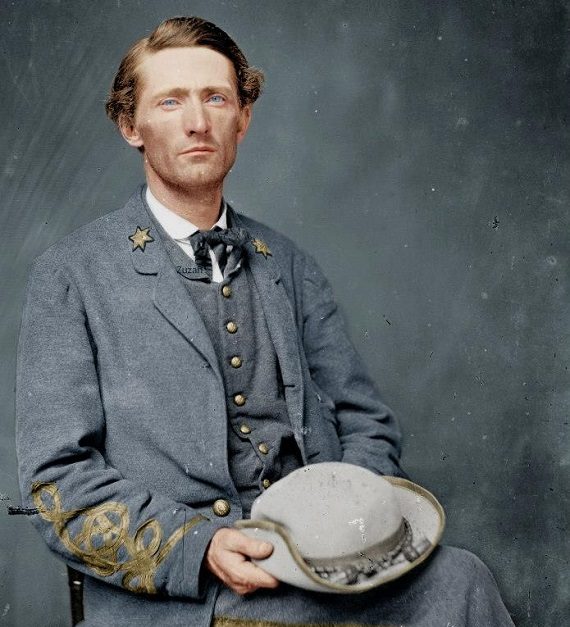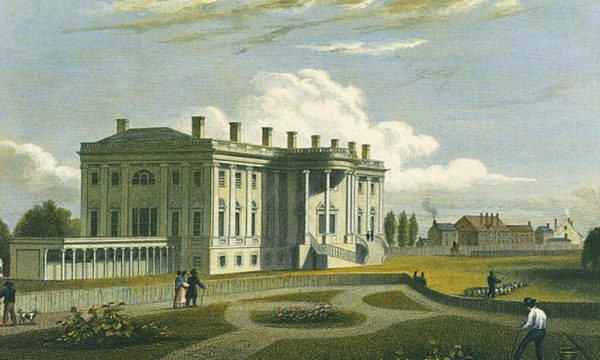V.P. Hughes, A Thousand Points of Truth: The History and Humanity of Colonel John Singleton Mosby in Newsprint (XLIBRIS, 2016).
Given command over a semi-independent unit of partisan rangers in the Army of Northern Virginia, a dashing young Confederate major led a cavalry raid at the Fairfax county courthouse, deep behind Federal lines. With just a handful of men and the element of surprise, he captured three Federal officers (including a brigadier general asleep in his tent), fifty-eight soldiers, thirty horses, and all of their supplies. Awakening the general with a slap across his backside, the major curtly asked the general if he knew of “Mosby.” “Yes, have you caught him” inquired the dazed and confused general. “I am Mosby,” replied the major, to the general’s horror.
John Singleton Mosby was and is one of the most controversial figures in the War of Southern Independence – an era with no shortage of controversy. In Valerie Protopapas Hughes’ new book A Thousand Points of Truth: The History and Humanity of Col. John Singleton Mosby in Newsprint, published by Xlibris, she argues forcefully that Mosby is “gravely misunderstood” and “wrongly misrepresented.” By drawing exhaustively (and I do mean exhaustively) from contemporaneous newspapers throughout his life, Ms. Hughes has written not only a refreshing corrective to the misunderstanding, misinformation, and myth of Mosby, but also a useful history of Mosby historiography. In other words, Ms. Hughes has not just written about what actually happened, but about what did not happen – a history of what is true and what is false.
Ms. Hughes compares Mosby to his personal hero, Socrates, a man “filled with the most intense conviction of the supreme and overwhelming conviction of truth and the paramount duty of doing right, because it is right on every occasion, be the consequences what they may.” Her hope is that Mosby will one day be “universally recognized as more than a soldier, however brilliant and heroic, but as a true champion of the truth and the right.” In a day and age when a future majority of U.S. citizens will not be bound to America by blood and soil, vandalizing monuments of “dead white males” by black radicals is socially acceptable, and Carpetbaggers and Scalawags control Southern statehouses and governors’ mansions, the crusade to redeem the Confederacy may be a lost cause. Such odds, however, never stopped Mosby, and they certainly do not stop Ms. Hughes.
The title of Ms. Hughes’ book, A Thousand Points of Truth, is drawn from the old-fashioned “halftone image,” which she uses as a metaphor for her style of biography. Prior to 1873, fully reproducing photographs in print was cost-prohibitive, but the halftone process made it possible. Halftone images reproduced actual photographs as a series of points of different sizes, shapes, and shades. On their own, the points were just dots, but together, they formed a picture. Like a halftone image, Ms. Hughes’ biography is comprised of different points, no single one of which shows much of anything, but all of which together produce a full picture. Just as you would not see the full picture if you focused on a single point of a halftone image, so you would not see the full Mosby if you focused on any single point of his life. A modern version of this effect would be the “pixelation” of digital images: the closer you zoom in on a digital image, the “pixels” become clearer but the image itself becomes blurrier.
As Ms. Hughes combs through the newspaper accounts of Mosby’s life and times (from his Confederate military service to his U.S. civil service), she singles out and shoots down seven long-lasting untruths about Mosby: 1) That his legend was fabricated by himself and his partisans; 2) That his legend was fabricated by later biographers; 3) That he was never a true believer in the Confederacy and sold out after the War by becoming a Republican; 4) That he made more headlines than he made a difference during the War; 5) That he was a failure after the War; 6) That he committed war crimes during the War; and 7) That he was personally unpleasant. Hughes decisively refutes all of the above. I must confess, before reading her book, I myself had fallen for some of these untruths, but she has changed my mind on all counts!
The “Civil War” is, without a doubt, the most “overdone” event in American history. For instance, aside from Jesus Christ, more books have been written about Abraham Lincoln than any other historical figure. Yet that is just the tip of the iceberg: year after year, more books are written about the War than any other event, and what few movies about American history are filmed almost always are about the War. With the subject so oversaturated, is there really room for another book about the War? The answer to that question, as far as Ms. Hughes’ A Thousand Points of Truth is concerned, is yes. She is not rehashing old territory and refighting old battles, but is, much like Mosby, treading new ground and taking the enemy by surprise. I would be interested to see her style of biography applied to other controversial Confederates, such as Nathan Bedford Forrest or John Hunt Morgan. Ms. Hughes’ book can be read and enjoyed on its own, but would be best as a companion to a more traditional biography, such as that by James A. Ramage.







